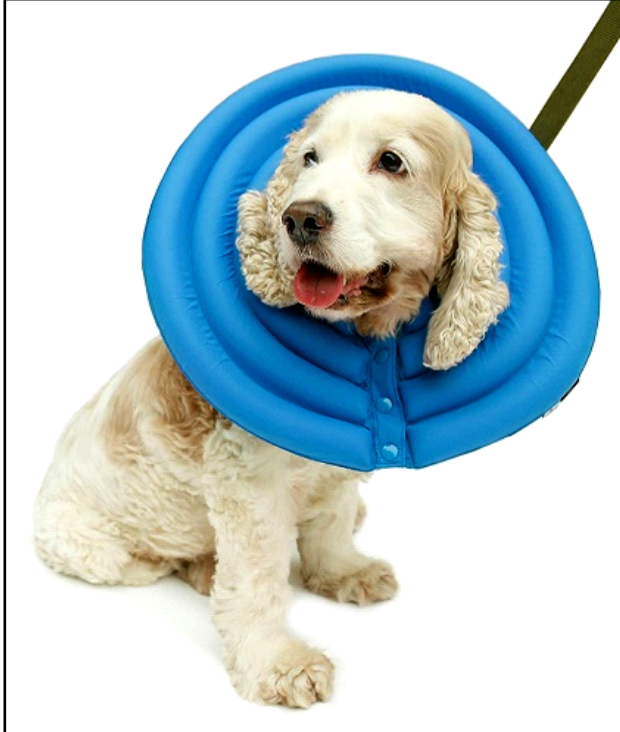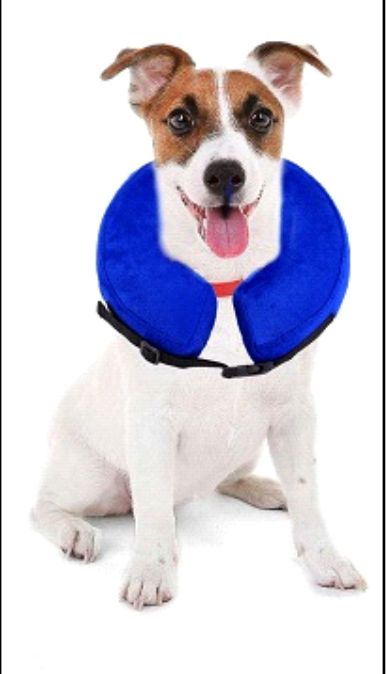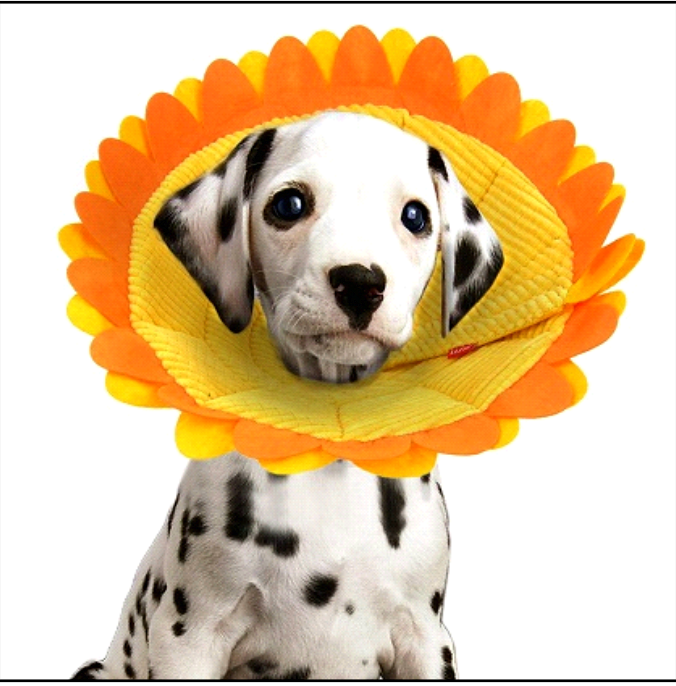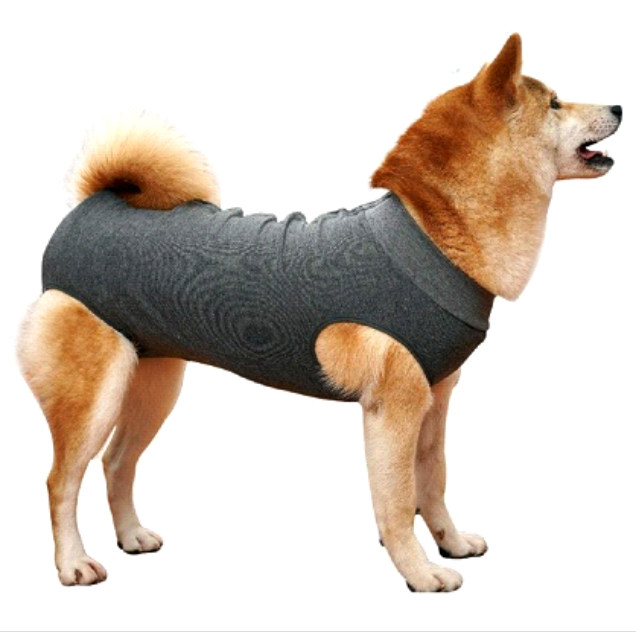Elizabethan collar certainly is good at fulfilling its job but it’s been receiving the bad reputations from people, social media, and animals which named it the ‘Cone of Shame’ eventually. Nevertheless, people have started taking the cone of shame in a hillarious way.
Most pet parents at some point in their life have used cone of shame to prevent their pet from licking, chewing and biting the wounds, surgery sites, or hotspots. This thing has been also called ‘lampshade’ and ‘pet radar dish’, but most commonly it is known as ‘cone of shame’.
Pets hate the cone of shame, simply because it restricts their strong urge of licking their wounds or hotspots. Despite the cone of shame works well, there is a need for its alternatives. Animals hate it, and sometimes they would stubbornly refuse to put on. Well, if your dog cannot stand the traditional Elizabethan collar, you would like to look for other alternatives to it.
A Little Bit About the History of Cone of Shame
Frank L. Johnson in 1959 registered the patent of Elizabethan collar. The collar mimics the ruffs worn in Elizabethan times (around 16th century to mid 17th century) and that gave the name to these truncated collars. Some vets, before 50ish years ago, used to fold X-ray films or cardboard in the shape of the cone of shame because there were no such pre-made E-collars available on the market.
Dogs’ transition from barnyard to the bedroom advanced the pet supplies and more products were started being produced for our pets’ comfort. Subsequently, the different types of collars were also developed for different purposes.
As a result of medical advancement over the course of time, healing times shortened. So, the practice of using E-collar in a combination with quick healing started becoming popular. People were okay to put a cone of shame on the neck of their dogs because inconvenience was for a short period of time only.
The alternatives to the cone of shame have the same goal of preventing your dog from reaching to wound or surgery site with the mouth. And somewhat they all have similar shapes but are designed to reduce the inconveniences. So, the right alternative is what works for your pooch the best.
Alternatives to Cone of Shame
There are too many products being sold as alternatives to the cone of shame. Basically, most of them are variations of a particular product. That said, I have included the alternatives that are significantly different than each other.
Neck Bands, Padded Rings, and Donuts

source:https://www.amazon.com/UsefulThingy-Dog-Recovery-Collar-Collar/dp/B075WZG278/
These are large collars with smooth and soft pads that gives comfort. The shapes somehow can be a little different. For example, the collar above in the picture could have the shape of a donut.
Pro: The advantage of this kind of collar is it looks quite better than a cone of shame and is comfortable of course. Also, it facilitates better peripheral vision than an E-collar.
Con: If this collar is not of the perfect size and fitted properly, your dog might still be able to reach out to the wound and chew or bite it.
Pillow collars

source:https://www.amazon.com/PetAZ-Inflatable-Elizabethan-Postoperative-Comfortable/dp/B078Y4YFCG/
Pillow collars are similar to the padded collars or donut collars as the only difference between the both is pillow collars are inflatable whereas neck bands are not.
Pro: Definitely more comfortable and looks fine.
Con: The ring has to be diametrically large to prevent them to reach out to their wounds. It cannot be used for the pets who stay alone overnight because it is uncomfortable to lie down with the collar on and sleep.
Cloth Cone

source:https://www.amazon.com/Alfie-Pet-Petoga-Couture-Sunflower/dp/B01JILXEX6/
These cones are made of cloth and are collapsible but somewhat sturdy. They are different from the plastic E-collars only by the material used.
Pro: Cloth cones look better and are more comfortable compared to plastic E-collars.
Con: Sometimes, cloth cones become easily collapsible when they lose their sturdiness. This will make it a sure thing for a dog to bite, scratch, and lick the wound.
Surgical Clothing

source:https://www.amazon.com/Due-Felice-Professional-Abdominal-Alternative/dp/B07R6CPM47
This is not a collar. When your dog puts on a cloth he won’t be able to lick, bite, or scratch because the wound, surgical site, or a hotspot will be hidden under the cloth and bandages.
Pro: This will let your dog move freely and won’t feel the burden of carrying ‘shame’ wherever they go.
Con: It cannot be used when an injury site is to be kept open.
Vets Prefer E-Collars
Though one of the alternatives work for your dog, vets recommend E-collar, the cone of shame. They believe the most protection your furry friend is going to have is from the plastic Elizabethan collar.
Experts suggest that most pets get along with it very well and soon. The inconveniences are temporary and even cats get used to it soon. The only time you should look for the alternatives is when your pet dozes off with the cone put on.
Most of the pets have to wear it about seven days, and in the case of more serious healing, it might take 10 to 15 days, or in the other case as much as 5 days. Vets suggest to keep the E-collar handy and do not get rid of it because you might need it again.
More importantly, when your pet is sharing home with other canine and feline friends, they all will have to wear the cone of shame. Because other pets also will likely to lick, bite, or scratch the wound.
In a nutshell, cone of shame is not really embarrassing and you can use it if that works for your pooch. Think of other alternatives when you think the inconveniencies are overweighing the fulfilling the purpose of it.
If you had been there, share your experience with other pet parents in the comment section below. Long may live the canines!



